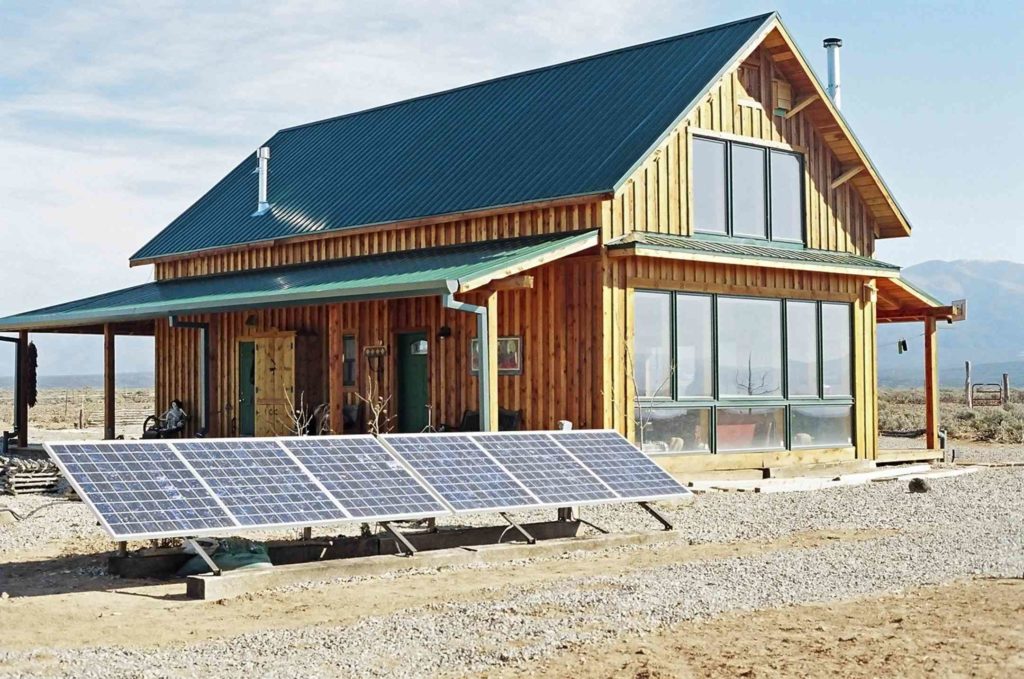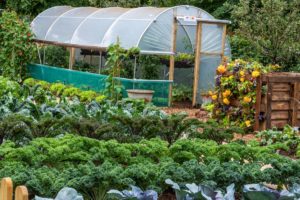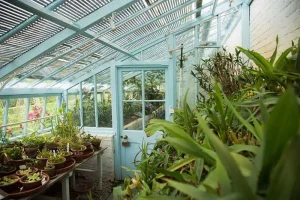Are you tired of relying on the grid for your energy needs?
Do you dream of living off the grid and producing your own electricity?
If so, then you’re in luck!
With the right equipment and a little bit of know-how, you can harness the power of the sun to light up your home and power all of your appliances.
But before we dive into the specifics of off-grid living and solar power, let’s take a closer look at why this lifestyle is becoming increasingly popular.
Assess your energy needs
Determine how much electricity you need to power your home and appliances. This will help you decide on the right size of your solar power system.
This step will help you decide on the right size of your solar power system, ensuring that it meets your energy needs and provides a reliable source of power for your homestead.
To begin, you’ll need to inventory the appliances and devices you plan to power with your solar system.
This includes lights, refrigerators, freezers, heating and cooling systems, and any other electrical devices you use on a daily basis.
Next, you’ll need to estimate the average amount of energy each device consumes in watts or kilowatts.
You can find this information on the device’s label or online.
Once you have a list of your energy needs, you can determine the total amount of energy you require to power your homestead.
This total will serve as a guide for selecting the appropriate size of your solar power system.
Keep in mind that the size of your solar system will also depend on other factors such as the amount of sunlight your location receives, the angle and orientation of your solar panels, and the amount of energy storage you need.
By assessing your energy needs and selecting the right size of your solar power system, you can ensure a reliable and sustainable source of energy for your off-grid homestead.
This will help you reduce your dependence on the grid, lower your carbon footprint, and enjoy the many benefits of living off the grid.
Choose a suitable location
Your location will play a important role in determining the amount of sunlight your solar panels will receive. Choose a location that gets plenty of direct sunlight.
When it comes to designing an off-grid homestead, selecting a suitable location is important.
One of the most important factors to consider is the amount of direct sunlight your solar panels will receive.
Solar panels work best when they are exposed to direct sunlight, so it’s important to choose a location that gets plenty of direct sunlight throughout the day.
This will ensure that your solar panels can generate enough electricity to power your off-grid homestead.
When evaluating a potential location, consider the direction your land faces and the surrounding topography.
South-facing locations tend to receive more direct sunlight than north-facing locations, so it’s ideal to choose a location that gets direct sunlight for at least 6 hours a day.
Consider the height and positioning of nearby trees and buildings, as these can block the sunlight and reduce the amount of electricity your solar panels can generate.
To maximize the amount of direct sunlight your solar panels receive, it’s also important to choose a location that is relatively flat and free of obstructions.
This will help ensure that your solar panels can absorb as much direct sunlight as possible.
If your location is hilly or mountainous, you may need to invest in additional equipment, such as solar trackers or tilt brackets, to ensure that your solar panels are angled correctly to receive the most sunlight.
By carefully selecting a suitable location for your solar panels, you can ensure that your off-grid homestead is self-sufficient and able to meet your energy needs.
Whether you’re just starting out or looking to expand your existing homestead, taking the time to choose a location with plenty of direct sunlight will pay off in the long run.
Install solar panels
Install high-quality solar panels that are specifically designed for off-grid living. These panels should be durable and efficient to maximize your energy production.
Installing solar panels is an essential component of off-grid living and homesteading.
High-quality solar panels that are specifically designed for off-grid living can provide a reliable and renewable source of energy for your homestead.
Look for panels that are durable and efficient, as these will maximize your energy production and minimize your dependence on non-renewable energy sources.
When choosing solar panels, consider the size of your homestead, your energy needs, and the amount of sunlight your location receives.
Consider investing in a battery bank to store excess energy produced by the solar panels, allowing you to power your homestead even on cloudy days or at night.
With a well-designed and well-maintained solar panel system, you can reduce your carbon footprint, lower your energy costs, and increase your energy independence, all while providing a sustainable and reliable source of power for your off-grid living and homesteading needs.
Use a charge controller
A charge controller is a important component that regulates the flow of energy from your solar panels to your batteries. It prevent overcharging and ensures that your batteries are fully charged.
A charge controller is a important component in any off grid solar power system.
It regulates the flow of energy from your solar panels to your batteries, ensuring that your batteries are fully charged without overcharging.
Overcharging can cause your batteries to prematurely fail, rendering your entire system ineffective.
By preventing overcharging, a charge controller helps to extend the life of your batteries and ensures that your energy storage system runs smoothly and efficiently.
A charge controller can help to prevent over-discharge of your batteries, which can also reduce their lifespan.
By maintaining the optimal charge and discharge levels of your batteries, a charge controller helps to ensure that your off grid living and homesteading system operates at its full potential.
In addition to preventing overcharging and over-discharge, a charge controller can also help to optimize your energy harvesting and storage.
By continuously monitoring the state of charge of your batteries and the output of your solar panels, a charge controller can adjust the flow of energy to maximize the efficiency of your system.
For example, if your solar panels are producing more energy than your batteries can handle, a charge controller can redirect excess energy to other appliances or devices, such as a water heater or a garden irrigation system.
By maximizing the use of your energy resources, a charge controller can help to reduce your reliance on the grid and increase your energy independence.
Overall, using a charge controller is an essential aspect of off grid living and homesteading, and it is a critical component that should not be overlooked.
Choose the right batteries
Select deep-cycle batteries that are designed for off-grid living. These batteries can be charged and discharged repeatedly, making them ideal for solar power systems.
When it comes to powering your off-grid homestead, selecting the right batteries is a critical decision.
Deep-cycle batteries are the best choice for off-grid living and homesteading, as they are designed to be deeply discharged and recharged numerous times.
Unlike standard car batteries, which are designed for short bursts of power, deep-cycle batteries are built to provide a steady flow of power over an extended period.
This makes them perfect for powering your off-grid homestead, where you may need to run appliances and lights for hours on end.
Deep-cycle batteries are designed with a special type of plate and lead alloys that allow them to withstand the repetitive discharge and recharge cycles.
This makes them more expensive than standard car batteries, but they are well worth the investment for off-grid living and homesteading.
Look for batteries that are designed specifically for off-grid living and homesteading, and be sure to properly maintain and charge them to ensure they last as long as possible.
With the right batteries, you’ll be able to power your homestead with confidence, knowing that you have a reliable source of energy no matter what.
Install an inverter
An inverter converts the DC power from your batteries to AC power that can be used in your home. Choose a high-quality inverter that is compatible with your solar panels and batteries.
Installing an inverter is a important step in off-grid living and homesteading, as it enables you to harness the power of your solar panels and batteries to meet your energy needs.
An inverter converts the DC power from your batteries to AC power that can be used in your home, providing a reliable source of electricity for your lighting, appliances, and other essentials.
When choosing an inverter, it’s important to select a high-quality unit that is compatible with your solar panels and batteries.
Look for an inverter that has a high efficiency rating, as this will ensure that you are able to generate the maximum amount of power from your solar panels.
Consider the capacity of the inverter, as this will determine how much power it can handle and how many appliances you can run simultaneously.
When selecting an inverter, it’s also important to consider the type of batteries you have.
For example, if you have lithium-ion batteries, you will need an inverter that is designed specifically for this type of battery.
Some inverters are designed for lead-acid batteries, so be sure to choose an inverter that is compatible with your specific battery type.
It’s important to consider the features and functions that you need from an inverter.
Do you need an inverter with a built-in charge controller?
Do you want an inverter with remote monitoring capabilities?
Answering these questions will help you choose an inverter that meets your specific needs and provides the best value for your off-grid living and homesteading setup.
Consider energy storage
Energy storage is essential for off-grid living. Consider investing in a battery bank that can store excess energy generated by your solar panels during the day for use at night or on cloudy days.
As an experienced off-grid living and homesteading expert, I highly recommend considering energy storage as a important component of your off-grid lifestyle.
Energy storage is essential for powering your home during periods of limited sunlight or on cloudy days, and it can provide peace of mind knowing that you have a reliable source of power.
A battery bank is a cost-effective and efficient solution for storing excess energy generated by your solar panels during the day, which can then be used to power your home at night or on cloudy days.
When selecting a battery bank, it’s important to consider the size and capacity of the bank based on your energy needs and the size of your solar panel system.
A larger battery bank will provide more energy storage and ensure that you have a reliable source of power during periods of limited sunlight.
It’s important to consider the type of batteries you use, as some batteries are better suited for off-grid living and homesteading than others.
Lithium-ion batteries, for example, are a popular choice for off-grid energy storage due to their high energy density, long lifespan, and low maintenance requirements.
In addition to a battery bank, it’s also important to consider other energy storage solutions, such as wind turbines or hydroelectric generators, depending on your location and resources.
These alternative energy sources can provide additional power and energy storage for your off-grid homestead.
Energy storage is a critical component of off-grid living and homesteading, and it’s essential to carefully consider your energy needs and select a battery bank that meets your specific requirements.
With the right energy storage solutions in place, you can enjoy a reliable and self-sufficient off-grid lifestyle.
Monitor and maintain your system
Regular monitoring and maintenance are important to ensure your solar power system is running efficiently. Monitor your system’s performance regularly, and perform routine maintenance to extend the life of your components.
As an off-grid living enthusiast, you understand the importance of maintaining your solar power system to ensure a reliable and efficient energy source.
Regular monitoring and maintenance are important to extend the life of your components, improve system performance, and minimize downtime.
To monitor your system’s performance, invest in a solar monitor that tracks your energy production and usage, identifies any issues, and provides insights to optimize your system’s performance.
This can help you catch any potential problems early on and address them before they become major issues.
In addition to monitoring, regular maintenance is also essential to extend the life of your solar power system components.
Clean your panels regularly to remove dirt and debris that can block sunlight and reduce energy production.
Inspect your system regularly to identify any loose or damaged wiring, connectors, or panels that may be causing issues.
Perform routine cleaning and lubrication of your inverters, charge controllers, and other components to ensure they continue to function optimally.
By staying on top of regular monitoring and maintenance, you can ensure your off-grid solar power system continues to provide reliable and efficient energy for your homestead.
Moreover, consider implementing a preventive maintenance schedule to keep your system running smoothly.
This can include monthly checks of your system’s performance, cleaning of panels and inverters, and lubrication of moving parts.
By monitoring and maintaining your off-grid solar power system, you can ensure that it operates at its maximum efficiency, providing you with reliable and sustainable energy for your homestead.
Want More? Dive Deeper Here!
Hey there! If you’re the type who loves going down the rabbit hole of information (like we do), you’re in the right spot. We’ve pulled together some cool reads and resources that dive a bit deeper into the stuff we chat about on our site. Whether you’re just killing time or super into the topic, these picks might just be what you’re looking for. Happy reading!






